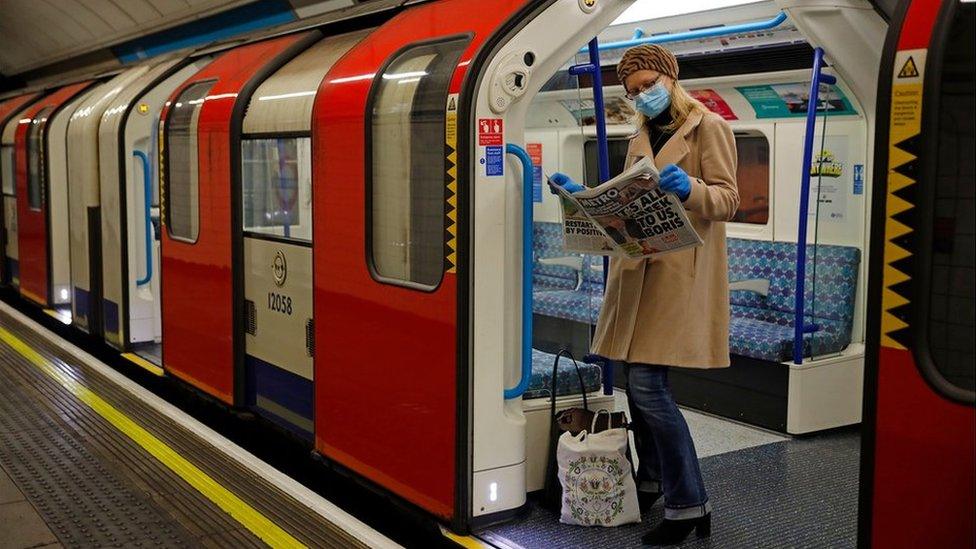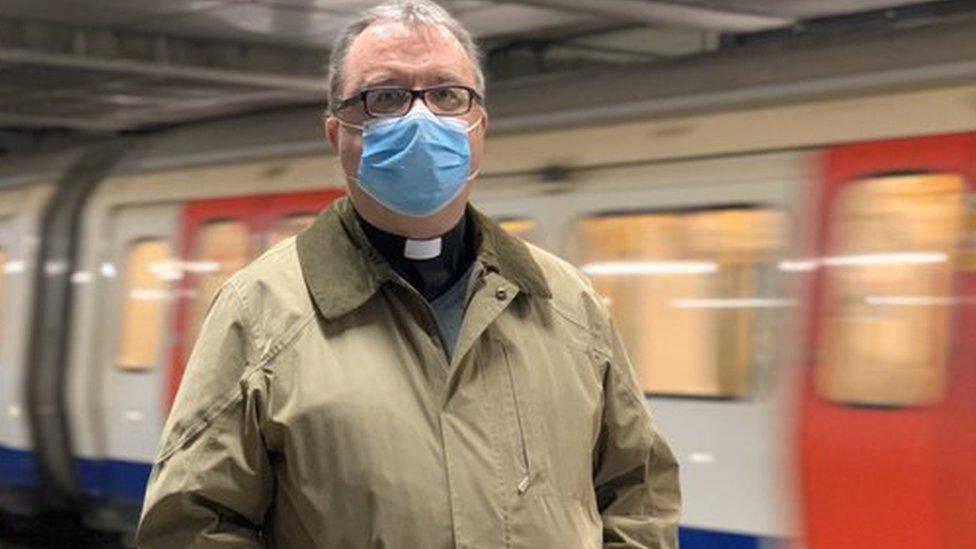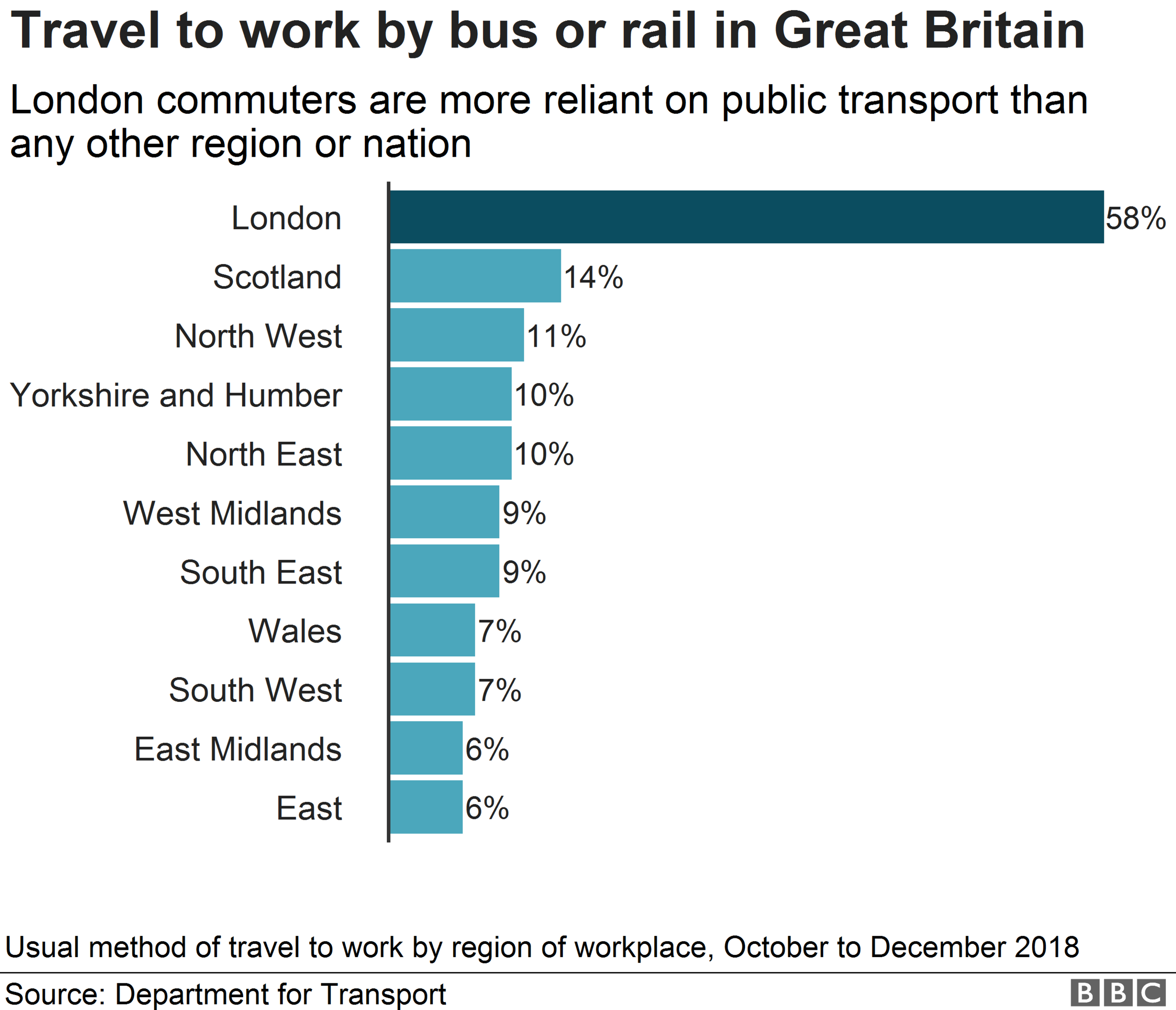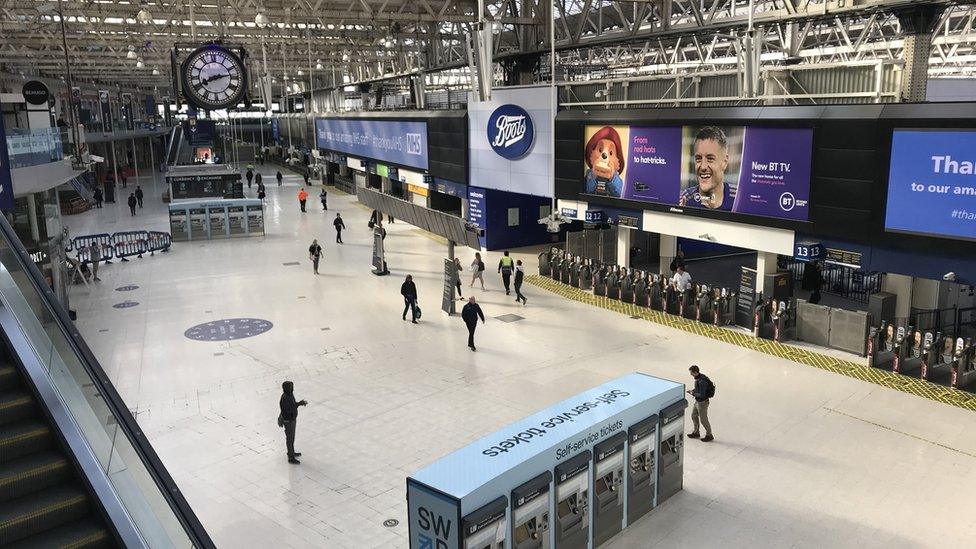Coronavirus: London commuters 'should avoid peak travel times'
- Published

London Underground journeys were up 10% on compared to last Monday, according to the Mayor of London.
London commuters should avoid peak times and "walk and cycle where possible" transport bosses have said.
Facemasks should also be used "for the entirety of their journey", in line with new government guidance.
On Sunday Boris Johnson said people "should be actively encouraged to go to work" from Wednesday, if they cannot work from home.
TfL said services would only be able to carry 13-15% of the normal passenger numbers, to maintain social distancing.
Mayor of London Sadiq Khan said he "expects anyone travelling on a TfL service to wear a non-medical cloth covering their nose and mouth for the entirety of their journey".
The guidance issued by TfL calls on commuters to "reimagine" their journeys as "significant changes" are required for the way commuters travel.
People are advised to "work from home if possible" and if they need to travel, "to think about the times, routes and ways".
Facial coverings should be used when travelling, particularly "where social distancing is hard to maintain", TfL said.
From today front line transport workers will be offered basic face masks, TfL said.

Analysis
By Tom Edwards, BBC London Transport Correspondent
Transport bosses are grappling with social distancing and how they'll be able to provide a service.
The challenge is far, far greater than shifting travel behaviour during the Olympics.
New queuing systems will be introduced to limit numbers.
They are putting in more temporary cycle lanes and wider pavements, as they also want people to walk and cycle.
But the unions say if social distancing can't be implemented the Tube should be shut.
Questions are being asked as to why it took so long for this recommendation on face masks to be made.
What has changed?

TfL warned that while it planned to increase the number of buses and Tube trains running, the services "will only be able to carry around 13-15% of the normal number of passengers" to maintain social distancing.
Journeys on the Tube were up 10% earlier compared to the previous Monday, according to the mayor of London.
Father Grant Ciccone said: "The use of masks will have to be enforced by the government before travel on the public Tube system and buses can be encouraged."

Father Grant Ciccone wears a facemask while travelling on the Tube
Some commuters said they were "dreading" using the Tube again.
Carys Barton has been driving into work at Imperial College NHS Trust during the lockdown and said she was worried about being "forced back into public transport again" if the roads became too busy.
"I can see us putting ourselves at further risk to soon if we are all packed in like sardines on that Tube again."


How difficult is it to get London back to work?
Analysis by Daniel Wainwright
The Prime Minister has said people should avoid public transport "if at all possible".
For more than two thirds of commuters in Great Britain, driving to work is the norm anyway.
However, in London commuters are far more reliant on bus and rail services, according to figures from the Department for Transport.
In 2018 nearly six out of 10 workers in London used public transport, including buses, trains and the Tube, while in most other regions it was only about one in 10.
People in London and the south of England were also the most likely to be able to work from home.
Analysis of the Annual Population Survey by the Office for National Statistics showed about a third of people in London and the south of England had ever worked at home compared to just a fifth of people in the North East.
However, before the coronavirus outbreak, working from home all the time was something only about one in 20 Londoners (5.5%) did.

Construction worker Peter Osu said he felt he was "putting my family at risk" returning to work for the first time since the lockdown started.
He said: "People were sitting close together on the Jubilee Line and others were having to stand.
"There was no two-metre spacing. This is the first day, can you imagine what it's going to look like by the end of the week?"

Passenger numbers at Waterloo station, London's commuter hub, remained low on Monday
Commuter Gerry Tiernan, head of production in the costume department at English National Ballet, said she was "worried" about increased passenger numbers.
She said: "It's going to be pure luck as to whether you get [Covid-19] or not."
- Published10 May 2020

- Published10 May 2020
- Published10 May 2020
